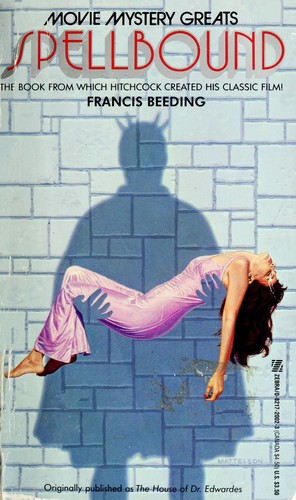[electronic resource] /
lingua English
Pubblicato il 2012 da RosettaBooks.

[electronic resource] /
lingua English
Pubblicato il 2012 da RosettaBooks.
From the outset, the air that Beeding's characters breathe crackles with ominous electricity. This is surely what appealed to Alfred Hitchcock when he found Beeding's The House of Dr. Edwardes and used it as the inspiration for his unforgettable film Spellbound. The house of the title is a lunatic asylum in France and Dr. Edwardes is the head psychiatrist. While Edwardes is held in high esteem, an almost iconic figure in psychiatric circles, there is something clearly amiss. The novel opens with a puzzling, ominous episode in which a patient being transported to the asylum grows agitated as the car bringing him there approaches. The patiently suddenly screams: the gorge of the devil and then attacks and kills one of the supervisors, a promising but inexperienced psychiatrist. This opens a position that Dr. Sedgwick accepts, but on arrival, she learns that Dr. Edwardes has taken a leave of absence to …
From the outset, the air that Beeding's characters breathe crackles with ominous electricity. This is surely what appealed to Alfred Hitchcock when he found Beeding's The House of Dr. Edwardes and used it as the inspiration for his unforgettable film Spellbound. The house of the title is a lunatic asylum in France and Dr. Edwardes is the head psychiatrist. While Edwardes is held in high esteem, an almost iconic figure in psychiatric circles, there is something clearly amiss. The novel opens with a puzzling, ominous episode in which a patient being transported to the asylum grows agitated as the car bringing him there approaches. The patiently suddenly screams: the gorge of the devil and then attacks and kills one of the supervisors, a promising but inexperienced psychiatrist. This opens a position that Dr. Sedgwick accepts, but on arrival, she learns that Dr. Edwardes has taken a leave of absence to calm his nerves. It doesn't take her long to discover that the house is hardly in order. The House of Dr. Edwardes and Hitchcock's Spellbound are both about madness, power, and terror. What is most interesting is the two very different approaches taken by each to illustrate these ideas. For Spellbound, Hitchcock borrowed heavily from Freudian psychoanalysis and its emphasis on dreams. Salvatore Dali's surrealistic interpolations are used to illustrate the more irrational aspects of the story. Beeding owes less to Freud, displaying much closer affinities with the brooding, psychological landscapes of Gothic novels of the eighteenth and nineteenth centuries, particularly Emily Bronte's Wuthering Heights. The result is a compelling work--part mystery, part modern Gothic.